Have you ever wondered why rainforests have their own clouds? Well, those clouds are largely created by plants “breathing” and releasing water into the atmosphere. But how exactly do plants contribute to the water cycle?
Plants contribute to the water cycle through transpiration, where water is absorbed from the soil, moves through the plant, & is released as water vapor. Water is absorbed by fine root hairs, & moved upwards in xylem to the leaves, where it is released through stomata.
Water is critical to life on Earth. It moves in a continuous cycle of precipitation as rain, collection, evaporation and condensing as clouds. But did you know that plants are also part of this cycle? Plants need some water for photosynthesis but some is also released through the leaves, back to the atmosphere through transpiration.
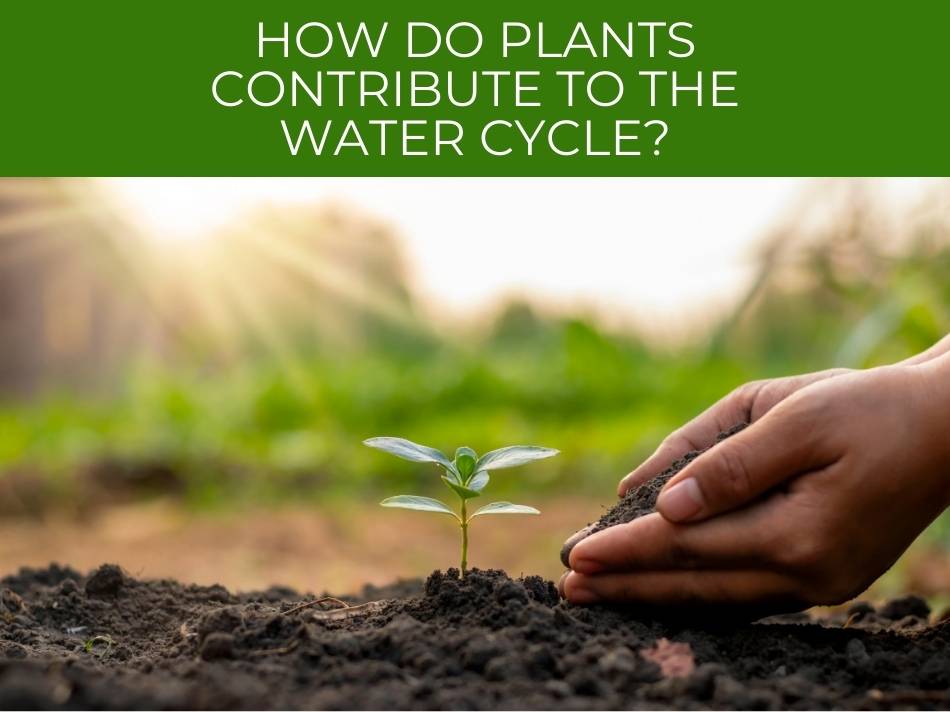
How do plants contribute to the water cycle
When water falls as precipitation (rain or snow), it is collected in the ground or in water systems.
The water that collects in lakes, rivers and the sea evaporates and condenses in the atmosphere, where it forms more precipitation.
The water that collects in the ground can be absorbed by plants, and released through the leaves in a process called transpiration.
The water cycle has 4 main stages; precipitation, collection, evaporation or transpiration, and condensation. Plants are involved in the transpiration step, taking up water in the soil and releasing it as water vapor into the air.
The water that escapes from leaves condenses in the atmosphere, and falls again as precipitation.

What is transpiration in the water cycle
Plants need water for photosynthesis, and absorb it from the soil through roots.
However not all water is used and some escapes.
The process of water movement through a plant, & its evaporation, is called transpiration. Some water that falls as precipitation is soaked into the ground through infiltration. Plants can absorb this groundwater to use in photosynthesis, and some of what they absorb evaporates from the leaves.
In rainforests, plants transpire so much that they create their own local weather patterns, which is why you see so much cloud and rainfall.
Find out what soil type is in the rainforest.
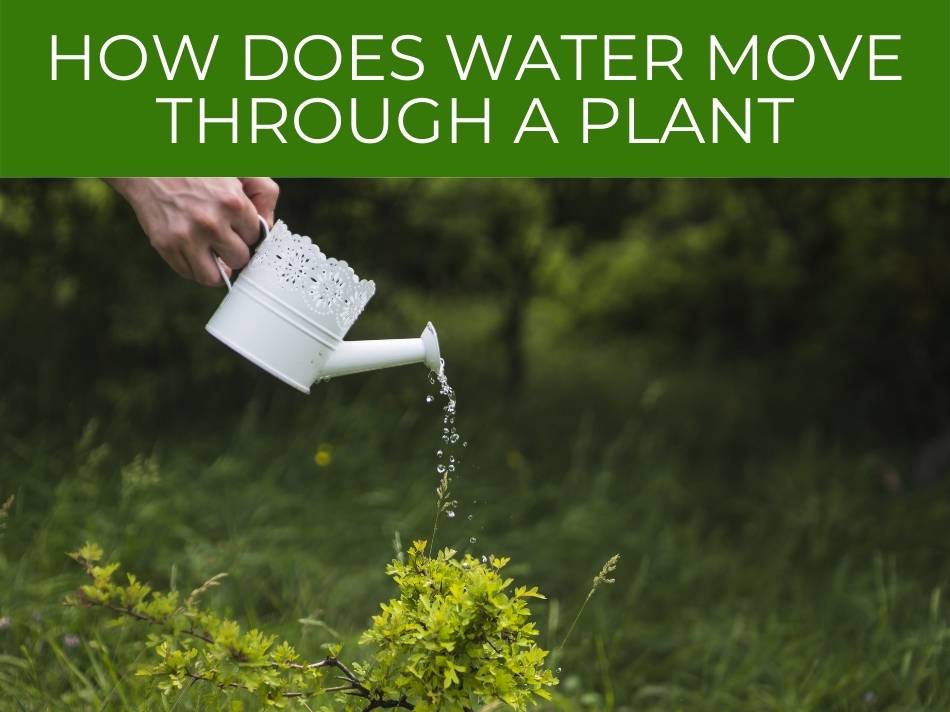
How does water move through a plant?
Water moves around plants through rigid, open tubes called xylem.
The process for moving water around is passive, meaning that it does not use energy, even if water is being moved upwards.
Water in the xylem is ‘pulled’ by the effect of neighboring phloem and transpiration, and ‘pushed’ by water pressure in the roots.
Water moves through plants via a network of tubes called xylem. Water moves passively upwards, from the roots through to the leaves, thanks to high solute concentration in phloem, and transpiration which ‘pulls’ water upwards, and root pressure which ‘pushes’ it.
Phloem is the system in plants that transports organic nutrients.
As the concentration of solutes is usually high, water in xylem flows into phloem via osmosis.
The transpiration process also ‘pulls’ water through the xylem, as water vapor escapes through stomata in the leaves, it is replaced.
The water pressure in the roots is higher than that in the xylem, which ‘pushes’ water upwards towards the leaves.
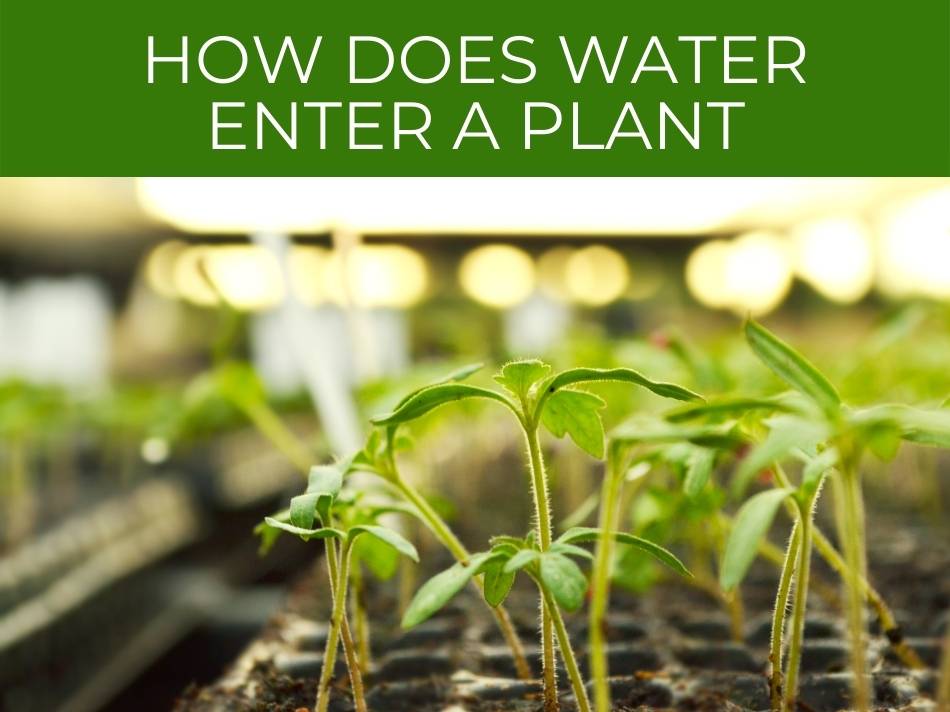
How does water enter a plant?
Water enters the plant from the soil, through roots and fine root hairs.
Root hairs are more permeable than larger roots, and also increase the surface area across which water can be absorbed.
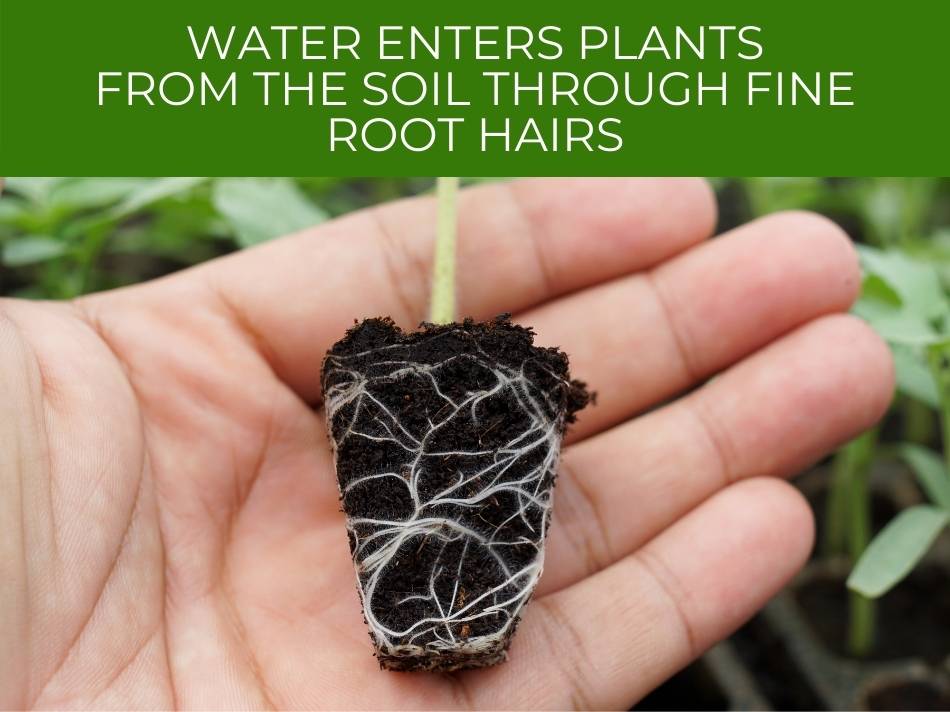
Water enters plants from the soil through fine root hairs, which cover the roots themselves. These small structures are more permeable to water than larger roots, and create a large surface area for water to be absorbed. As the water moves across the roots towards the xylem, it is filtered.
Many plants have symbiotic relationships with mycorrhizal fungi in the soil, which increases water uptake by creating an even larger surface area than root hairs.
Roots can grow away from dry areas and towards wet areas, in a process called hydrotropism.
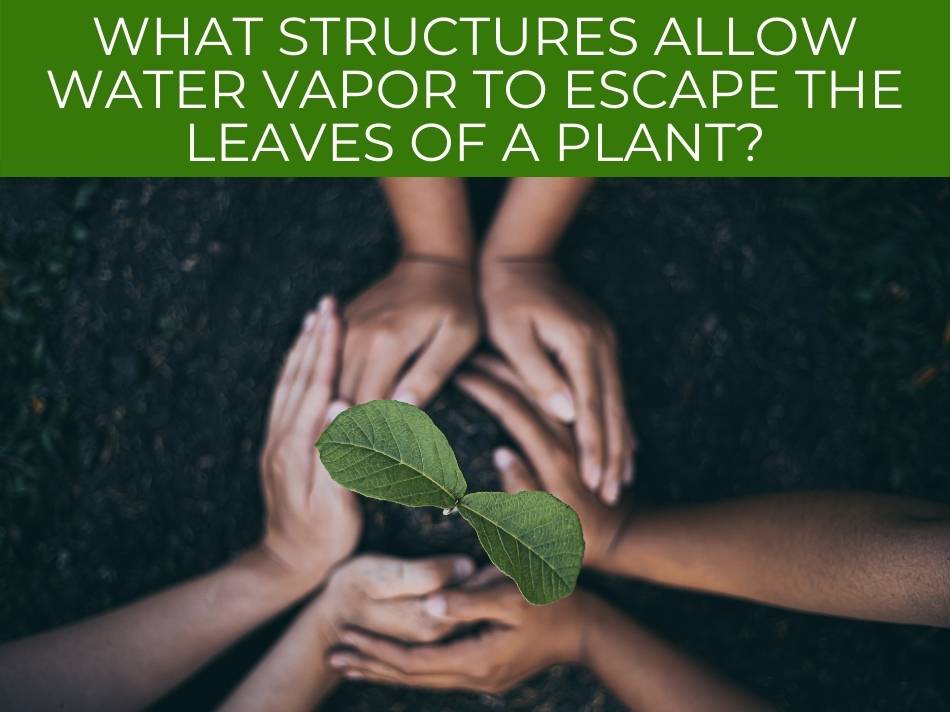
What structures allow water vapor to escape the leaves of a plant?
Plant leaves have tiny holes in them, called stomata, through which the plant takes in carbon dioxide and releases oxygen.
Apart from gas exchange, these small holes also allow water vapor to escape.
Water vapor escapes plant leaves via stomata: tiny holes on the underside of leaves that allow plants to release water vapor & oxygen, & absorb carbon dioxide. The opening and closing of stomata is controlled by guard cells which surround the hole.
The stomata are opened and closed by guard cells which surround the hole.
The guard cells close the stomata when the plant wants to limit water vapor loss.
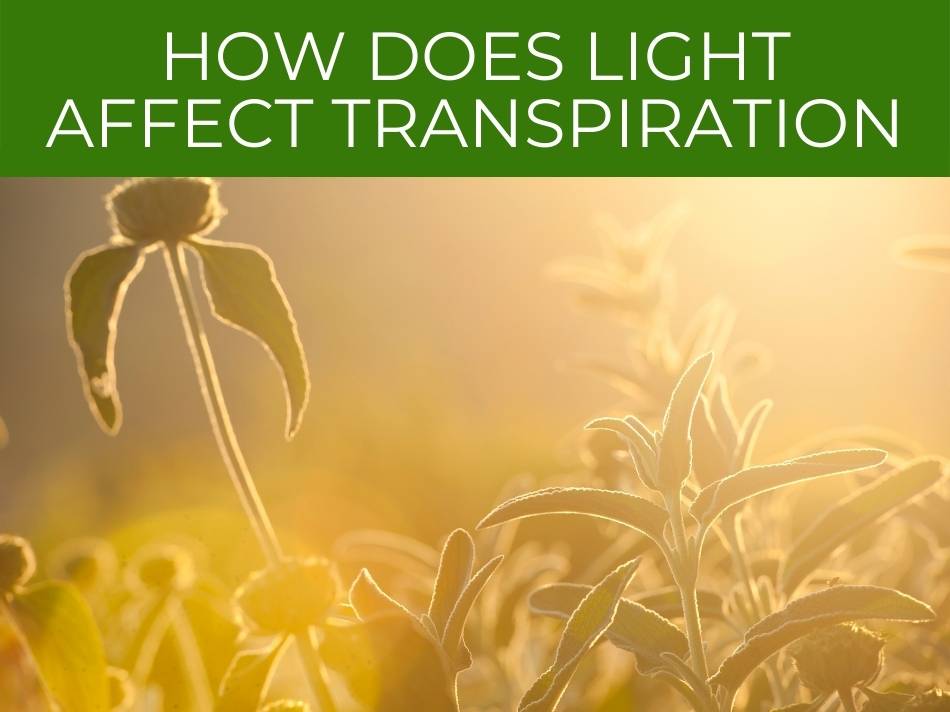
How does light affect transpiration
Transpiration is stopped when the stomata close, and is restarted when the stomata open.
During the day the plant needs carbon dioxide for photosynthesis, so the stomata open and transpiration can occur.
At night, the plant cannot photosynthesise and no longer needs carbon dioxide, so the stomata close and transpiration stops.
See where in the plant photosynthesis occurs.
Light affects transpiration during the day, when the plant needs carbon dioxide, the guard cells swell with water & the stomata open, allowing transpiration to occur. Guard cells close stomata at night, when the plant cannot photosynthesise. This halts transpiration and stops water from being lost.
This is why watering plants early in the morning is usually advised, as it supports the plant as transpiration begins.
Check out our full guide to automatic watering systems for plants.
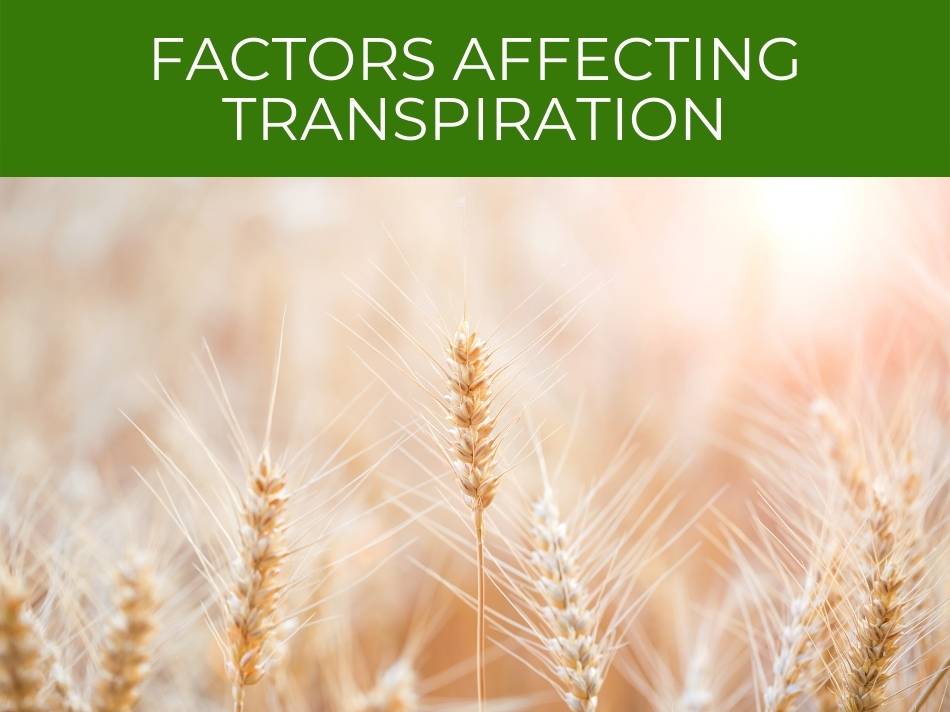
Factors affecting transpiration
Transpiration is affected by environmental conditions and the opening and closing of stomata.
Transpiration happens more quickly in dry, hot, windy conditions.
Transpiration is affected by conditions such as the temperature, relative humidity, & wind. Transpiration is also controlled by the opening and closing of stomata, which is affected by light and water supply, as well as the size & number of stomata on each plant.
Plants that grow in humid conditions tend to have very large stomata, leading to high rates of transpiration.
Plants that grow in dry conditions need to limit transpiration, and tend to have very small stomata, or highly protected stomata.

How does wind affect transpiration
Transpiration is a passive process, and is affected in the same way by factors that affect any kind of evaporation.
You can think of drying the washing on the line, and the same conditions that make good clothes drying weather will also increase transpiration.
Windy conditions will increase transpiration, as water vapor that escapes from the leaves is constantly being blown away.
Wind affects transpiration by continuously blowing water vapor away from the leaves. Wind thus keeps the concentration of water close to the leaves low, which increases transpiration. In low humidity conditions, wind can dramatically increase transpiration.
The water content in the air next to the stomata is kept low, which increases the concentration gradient and makes transpiration faster.

Conclusion
From understanding how daylight hours affect water movement, to knowing why humid conditions means plants need less water, becoming familiar with the transpiration process can help you understand how to better provide care for your plants.

